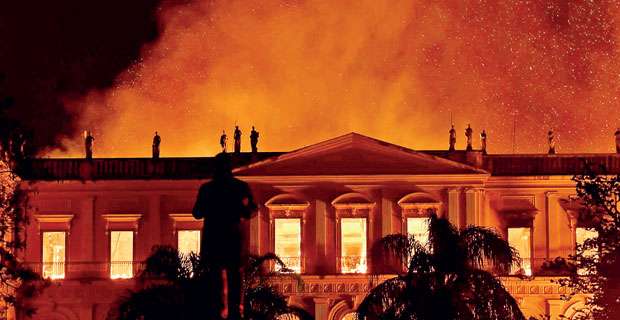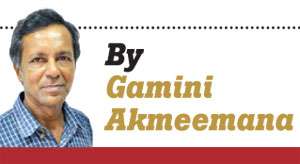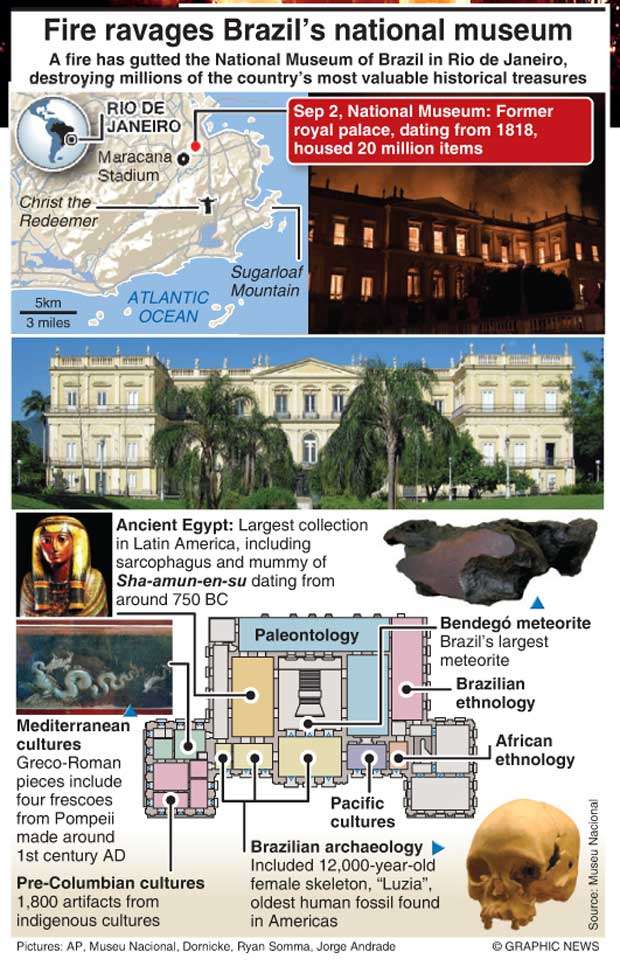14 Jan 2019 - {{hitsCtrl.values.hits}}

Much of the damage is irreversible, and only a fraction of the destroyed collection of 20 million artefacts can be recovered
The museum’s herbarium, main library and parts of the vertebrate selection survived as they were housed in a separate building
In September last year, Brazil’s 200-years-old National Museum based in Rio de Janeiro was burnt down to the ground. The police had to use tear gas and batons to hold back outraged protesters reeling from the shock. The underfunded museum lacked a sprinkler system, and the two nearest fire hydrants failed to work when fire fighters arrived. 
The museum hadn’t received its full annual budget of US$ 128,000 since 2014. In 2018, it received a paltry US$ 13,000. The year before, the curators were so short of cash they had to crowd fund to repair damage caused by termites to an exhibition hall.
The museum’s Vice Director Luis Fernando Duarte, who unplugged all the electrical items in his office before leaving work each day to minimize any risk of fire, said that even a quarter of the money budgeted for a single 2014 World Cup stadium would have been to make this museum safe and resplendent. The city of Rio spent US$ 15 billion on the Cup and US$ 13.1 billion on the 2016 Olympics.
"The museum hadn’t received its full annual budget of US$ 128,000 since 2014. In 2018, it received a paltry US$ 13,000"
Much of the damage is irreversible, and only a fraction of the destroyed collection of 20 million artefacts can be recovered. The museum’s herbarium, main library and parts of the vertebrate selection survived as they were housed in a separate building.
Researchers were delighted to recover Luzia, the oldest human fossil in the Americas, from the rubble. A group of museum staff, technicians and students were able to rescue a small number of artefacts from the burning building. The Bendego meteorite, a 5.8 ton space rock discovered in 1784, and a series of ancient Jewish Torah scrolls, too, survived.
The directors of twelve important natural history museums in the world have issued a joint statement promising to support the Brazilians in the coming “weeks, months and years.”
Researchers who had based a life time of work on the museum’s collection now find themselves lost. But, as curator Debora Pires put it: “The brains didn’t burn. We are working with a positive agenda.” Anthropologist Antonio Carlos de Souza Lima said that the loss of 38 years of research done by him on indigenous cultures is “very, very, small” compared to what Brazilians have lost as a country and intellectual community. He added that while it would be easy to yield to depression, he and his colleagues would go on fighting for their country’s future instead.
A group of students from the University of Rio de Janeiro have put out a global request for photographs and video clips of the museum and its collection. They have already received thousands of contributions from which they hope to construct a “virtual museum or memory space of some sort.”
Wikipedia posted a similar Twitter announcement calling for users to upload their personal snapshots of the museum to Wikimedia Commons, its open access repository of images.
"Researchers who had based a life time of work on the museum’s collection now find themselves lost. But, as curator Debora Pires put it: “The brains didn’t burn. We are working with a positive agenda.”
The museum already has digital files of several important artefacts, including fossils, Egyptian mummies, and Graeco-Roman artefacts taken before the fire.
This isn’t the first time a museum has been affected by accident or natural disaster. New York’s Museum of Modern Art caught fire in 1958 but most of the collection wasn’t damaged. Rotterdam’s Old Masters and modern European art gallery (the Museum Moijmans Van Beuningen) was damaged by five floods over the past 14 years and is currently constructing an estimated $70 million flood-proof structure. In 2016, fire destroyed India’s National Museum of Natural History in New Delhi. In 2015, the Museum of the Portuguese Language in Sao Paolo, Brazil, too, was destroyed by fire.
Eleanor Cummings of the Popular Science Magazine says it isn’t just natural disasters which threaten museums. “Museum science is a race against time,” she wrote, “and budget cuts, staff reductions, and declining visitation in countries around the world, the United States, included, aren’t making anyone’s job
any easier.”

30 Nov 2024 1 hours ago
30 Nov 2024 3 hours ago
30 Nov 2024 6 hours ago
30 Nov 2024 7 hours ago
29 Nov 2024 29 Nov 2024